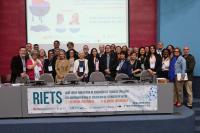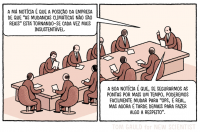UNAIDS welcomes United States of America's announcement of a new US$ 100 million investment fund to increase access to HIV services for key populations
 UNAIDS welcomes the United States’ announcement of a US$ 100 million Key Populations Investment Fund to expand access to HIV services. This fund created by the US President’s Emergency Plan for AIDS Relief (PEPFAR) will help close the gap between people who have access and people who are being left behind.
UNAIDS welcomes the United States’ announcement of a US$ 100 million Key Populations Investment Fund to expand access to HIV services. This fund created by the US President’s Emergency Plan for AIDS Relief (PEPFAR) will help close the gap between people who have access and people who are being left behind.
UNAIDS welcomes the focus of the investment towards reducing stigma and discrimination, empowering community leadership in design and delivery of services and increasing the quality of data on key populations. Key populations—sex workers, gay men and other men who have sex with men, people who inject drugs, transgender people and prisoners—have a right to health and human rights and must have full access to HIV prevention, treatment, social protection and legal services.
Announced at the United Nations General Assembly High-Level Meeting on Ending AIDS, Deborah Birx, United States Global AIDS Coordinator and Special Representative for Global Health Diplomacy, affirmed the US government’s commitment to health and human rights of key populations.
“It is unacceptable that key populations still face stigma, discrimination, and violence, which impede their ability to access quality HIV services.” said Ambassador Birx. “PEPFAR stands firmly and unequivocally with and for key populations, defined by UNAIDS as gay men and other men who have sex with men, transgender people, sex workers, and people who inject drugs, and prisoners, and we are deeply committed to protecting and promoting their health and human rights.”
This multi-year and comprehensive approach is critical to accelerate results and will help sustain community-led efforts including service delivery and addressing the barriers of stigma and discrimination that keep people from accessing essential services.
“UNAIDS stands in solidarity with everyone—especially key populations—who are blocked from services because of who they are or who they love”, said Michel Sidibé, Executive Director of UNAIDS. “This bold initiative will quicken the pace of action—we need more actors to join this movement and UNAIDS is ready to support implementation.”
Civil society and key populations will be closely involved in the design and the implementation of the new investment fund.
New data released by UNAIDS shows that more than 90% of new HIV infections in central Asia, Europe, North America, the Middle East and North Africa in 2014 were among people from key populations and their sexual partners. In the Asia and Pacific region, Latin America and the Caribbean, people from key populations and their sexual partners accounted for nearly two thirds of new infections. In sub Saharan Africa, key populations accounted for more than 20% of new infections, and HIV prevalence among these populations is often extremely high.
Key populations are present in all parts of the world and epidemiological evidence shows that they are globally at higher risk of HIV. People who inject drugs, are 24 times more likely to acquire HIV than adults in the general population, sex workers are 10 times more likely to acquire HIV, men who have sex with men are 24 times more likely to acquire HIV, transgender people are 49 times more likely to be living with HIV, and prisoners, are five times more likely to be living with HIV than adults in the general population.
UNAIDS
The Joint United Nations Programme on HIV/AIDS (UNAIDS) leads and inspires the world to achieve its shared vision of zero new HIV infections, zero discrimination and zero AIDS-related deaths. UNAIDS unites the efforts of 11 UN organizations—UNHCR, UNICEF, WFP, UNDP, UNFPA, UNODC, UN Women, ILO, UNESCO, WHO and the World Bank—and works closely with global and national partners towards ending the AIDS epidemic by 2030 as part of the Sustainable Development Goals. Learn more at unaids.org and connect with us onFacebook, Twitter, Instagram and YouTube.



